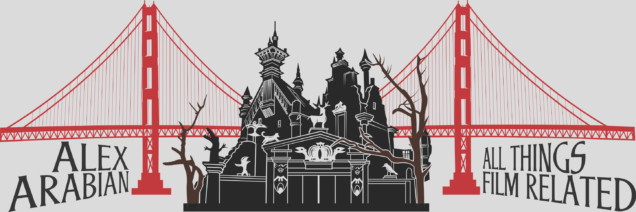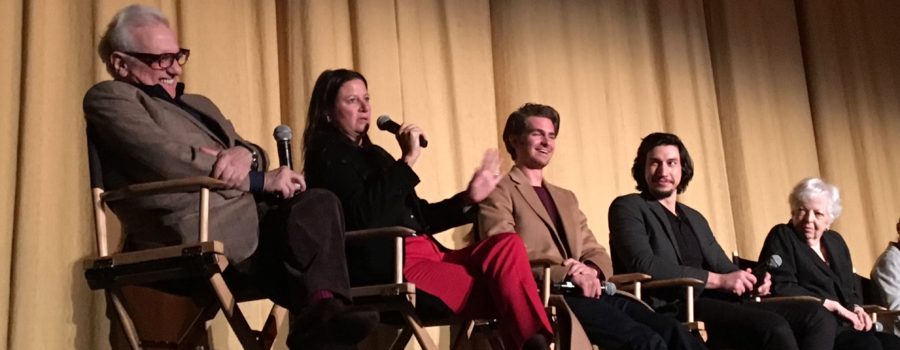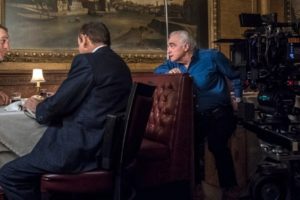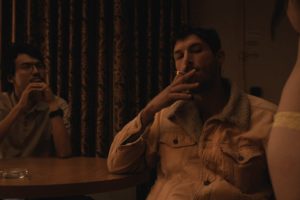Martin Scorsese eased into his seat at the Castro Theater on December 5, and addressed a crowd that just viewed the third viewing of his nearly three-decade-in-the-making passion project, behind only a Los Angeles audience at its American premiere the night before, and the Pope himself along with over 400 Jesuit priests at the Vatican on November 29.
“Ah, the beautiful Castro theater. I love this little theater,” he said before referring to the time he first screened “Mean Streets” for a San Francisco audience. “I haven’t been here since, what, 1973?”
This time, he was in The City to screen “Silence,” another step in the 74 year old’s continued evolution as a director. The film centers on the true story of two 17th-century Jesuit priests (played by Andrew Garfield and Adam Driver), who embark on a journey to Japan to rescue their mentor (Liam Neeson). The protagonists find the remains of the Japanese Jesuits, 300,000 of whom once thrived, now living in small villages in fear, hiding from the ruthless Inquisitor (played brilliantly by Issei Ogata), who executes all those who don’t practice Buddhism.
With little dialogue except for Garfield’s whispery inner narration, long periods of piercing quietness, and sounds of nature combine to make a somber score reliant on white noise. It is no secret that the film preservationist from Little Italy, New York has a love for Japanese cinema. Often sick as a child, his mother would let him watch Japanese films on tv dubbed in English at the age of 14. Naturally, his interest evolved into Akira Kurosawa and his contemporaries, all the way to modern Japanese cinema. This knowledge made it so easy for him to echo Japanese filmmaking techniques.
Scorsese explained that he became obsessed with the way that many Japanese films depicted nature, and wanted to emulate some of that perspective for the locations, shot in Taiwan, certain parts of which bare a striking resemblance to 17th century coastal Japan.
The two standout themes in the movie that dive into the spreading of Christianity are devotion, and, almost paradoxically, the respect and acceptance of others’ faiths.
Though Garfield and Neeson’s characters denounced Jesus, became Buddhists and inherited Japanese families from executed Japanese Christian men, they always kept their faith in a higher power. On the other hand, they realized that they had overstepped their boundaries as missionaries, and that the Japanese people never needed Christianity to be morally sound; they never needed saving.
As Ogata’s Inquisitor symbolically says in the film, the Japanese soil rejected Christianity. Their son of God was the sun, which rose every day. It was visible. Their paradise was tangible in nature and physical beauty. Of course, the refusal of the Japanese government to accept Christianity resulted in persecution, grueling details of which are shown throughout the film. These long, drawn out scenes are meant to reinforce in the audience how fallacious it is, inherently, to not accept others’ beliefs.
The performances by the American and Japanese actors are incredible. Tadanobu Asano, who plays the interpreter to the Inquisitor, and Shinya Tsukamo, who portrays a loyal, martyred Jesuit follower, are reunited onscreen for the first time since the 2001 ultra-violent Japanese thriller “Ichi the Killer”, directed by Takashi Miike, who Scorsese admires.
Adam Driver lost 51 pounds, Andrew Garfield dropped 41, and Liam Neeson lost nearly 20 during the production, serving not only as a testament to the actors’ trust in Scorsese and their commitment to their characters, but also reflecting the brutal filming locations. According to Scorsese and Koskoff, the number of takes in certain scenes had to be greatly reduced to get the right shot due to weather conditions and the health of the cast and crew, making for little margin for error.
There are always risks with passion projects. They can be too niche to appeal to a wide enough audience; they can become too personal. Oftentimes a director can become too preachy, as his emotional connection can compromise his objectivity on the subject matter.
But, in “Silence”, the legendary director not only avoids the aforementioned pitfalls, he also continues to evolve as a director, even this late in his career.
To bring to the fore how close the film is to him, Scorsese revealed that he has been trying to get this movie made for almost three decades. So, it makes sense that George Lucas, who introduced the film before the private screening, said that he thinks this is a film straight out of that golden decade of the 1970s in American Cinema in that it is large in scope and scale, but intimate in story.
In a Q and A after the screening, Scorsese mentioned that it was difficult to seek funding, and production kept being postponed. The film was originally set to be his next feature film following “Gangs of New York.” Money was owed, contracts were made and broken, and a script was “nonexistent” (as Marty said accompanied by his unmistakable, characteristically nervous, self-deprecating laugh film lovers have come to endearingly embrace).
Eventually, they made the film on a $46.5 million budget, about $22 million under the anticipated budget, as producer Emma Tillinger Koskoff proudly stated after the screening. It was shot on classic 35mm film, unlike Scorsese’s most recent films, which were shot digitally. This brings a gritty realism to the setting and helps accentuate that vibe of the golden era for modern American cinema.
All of these elements within the production collectively contribute to 159 minutes of a mesmerizing, transformative onscreen experience. Along with the audience, I laughed, I cried, and I became consumed by the meditative cinematic experience being transposed onto us. On this night, in one of San Francisco’s most legendary venues, I wallowed in another Martin Scorsese masterpiece.








1 Comment
Leave your reply.